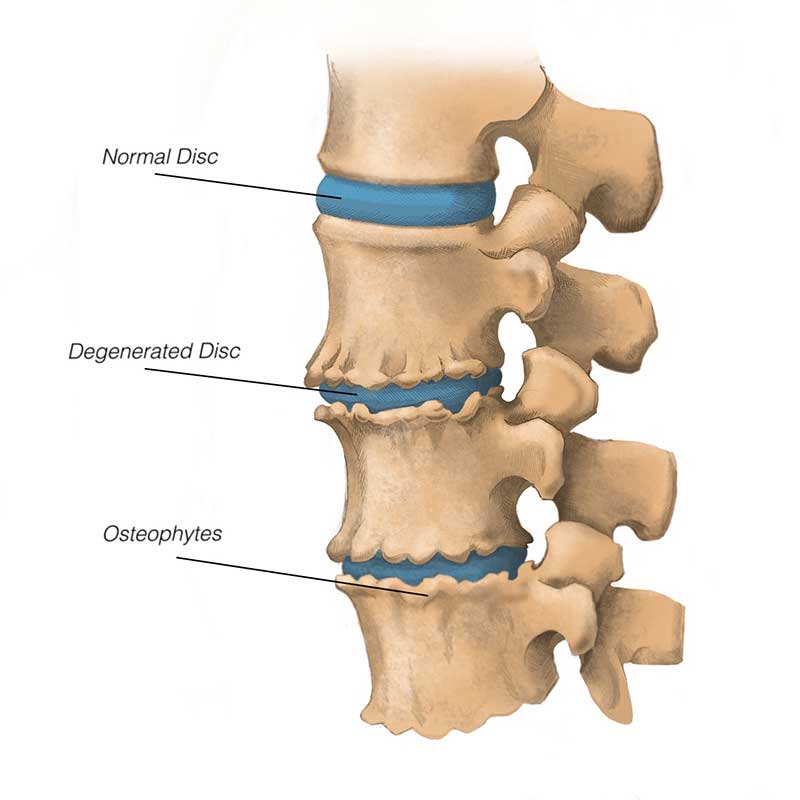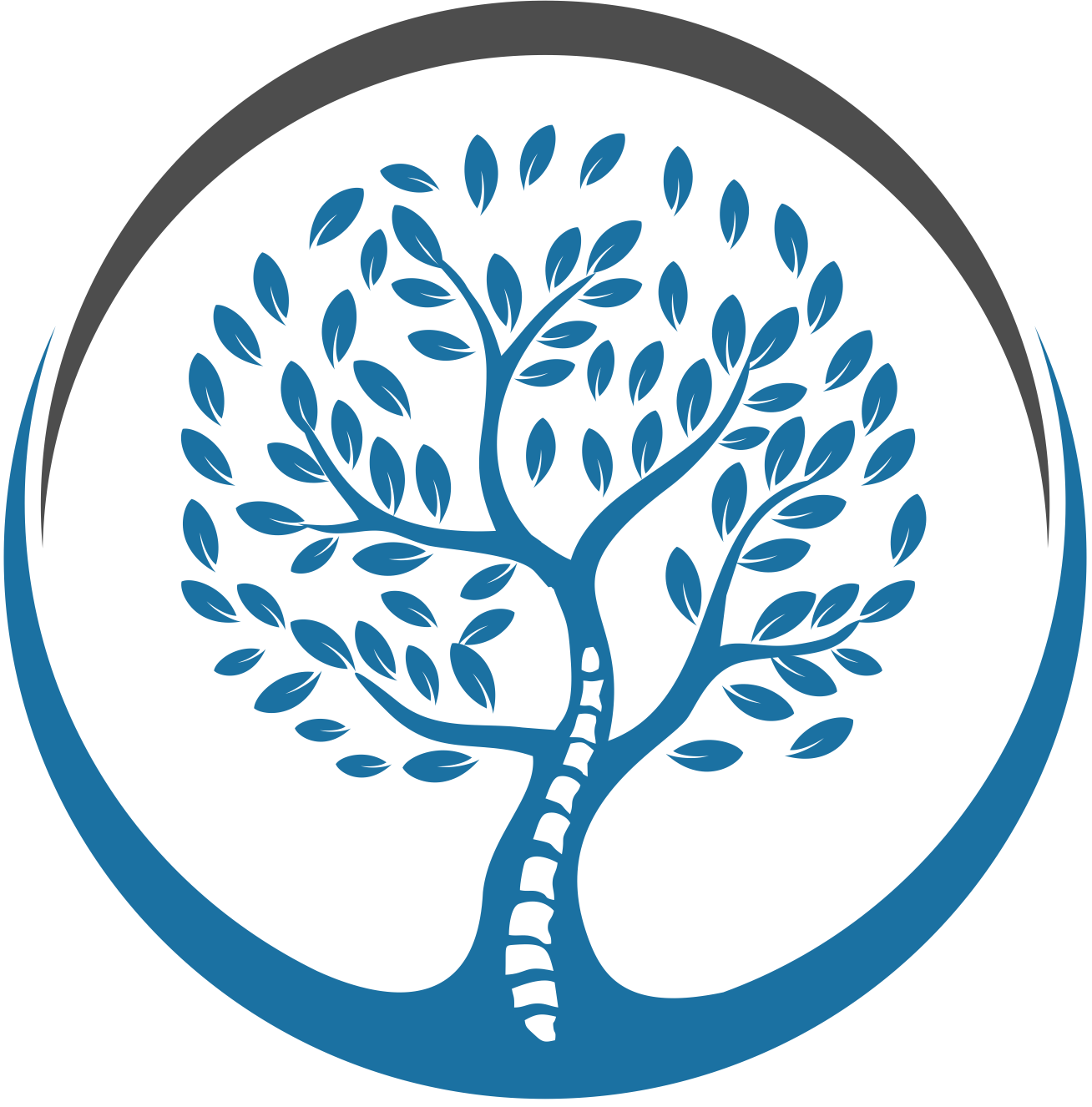
Degenerative Disc Disease
Degeneration first occurs after there are small tears within the outer fibers of the disc. Over time, this changes the distribution of forces over the disc material and the vertebrae starts to grow small bone spurs to aid in the stability of this particular bony segment of the spine. More tears may or may not occur within the outer disc fibers progressing the degeneration process. As we age, the fluid content of the disc material begins to decrease affecting the height of the disc. As the height decreases, the disc material will begin to push outwards. Disc material in combination with bone spurs can add extra pressure to the nerve root which is exiting the spine at the degenerative level. Very small increases in pressure on the nerve, can cause significant levels of pain.
This is a condition that takes many years to develop. Initially, one may experience an episode of acute low back pain. Pain can be localized to the back or you may have referred pain down into the buttock or leg. In most cases, this patient will recover fairly quickly and will return to normal activities. This particular patient may experience one or several more episodes throughout their life. After the age of 50, this patient may experience a more prolonged period of low back pain, or low back pain that doesn’t completely go away. The symptoms tend to be very similar to a disc bulge, moderate to severe leg pain with or without low back pain.
Chiropractic treatment is going to initially focus on pain control by decreasing inflammation. Once the pain is manageable, treatment will involve more introduction of movement through some form of spinal manipulation, exercise and muscle treatments (ART, Graston®, massage,etc…). In addition, education will provide self treatment options, proper ergonomics and exercise technique. An important concept to remember with DDD is that treatment does not reverse any of the anatomic changes that occur, but helps manage the symptoms.
Quick Facts
- Also Known as DDD or Osteoarthritis of the Spine
- Disc failure results in pain in the back, neck, or extremities
- This is a chronic, slow progressing condition
